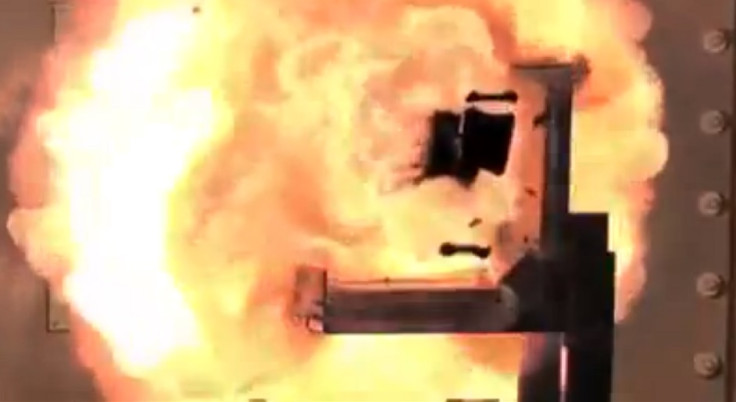US Navy to Trial 'Star Wars' Weapon that Fires at Seven Times the Speed of Sound
The US Navy is planning sea trials for a weapon that can fire ammunition at seven times the speed of sound.
Dubbed "Star Wars technology", the rail gun can fire low-cost projectiles which weigh 10kg using electromagnetic energy.
Matthew Klunder, chief of Naval Research, said the weapon will make enemies "think twice" and revealed that the futuristic electomagnetic rail gun had already undergone extensive testing on land.
Speaking at a roundtable event, Klunder said the weapon would be mounted on the USNS Millinocket, a high-speed vessel, for sea trials in two years.
According to NBC news, Klunder planned to discuss progress on the system with military and industry leaders at the annual Sea-Air-Space Exposition this week.

Klunder said: "It's now reality and it's not science fiction. It's actually real. You can look at it. It's firing. It will help us in air defence, it will help us in cruise missile defence, it will help us in ballistic missile defence."
He added that the gun will "shoot a projectile that's about one one-hundredth of the cost of an existing missile system today."
The Navy research chief said the cost of the weapon, around $25,000, will provide an obvious advantage over missiles, which can cost between $500,000 and $1.5 million. This difference, according to Klunder, will make potential enemies "think twice" about the economic viability of engaging US forces.
He told reporters: "That will give your adversaries a huge moment of pause to go: 'Do I even want to go engage a naval ship?' You could throw anything at us, frankly, and the fact that we now can shoot a number of these rounds at a very affordable cost, it's my opinion that they won't win."
Fireball of molten steel
The weapon is proved to have put a hole through six steel plates, measuring half an inch thick. An electromagnetic pulse, known as the Lorenz Force, propels a projectile down the barrel, which in turn creates a fireball of molten steel.
In the video, released on Monday, the projectile sheds its steel cladding and hits a dummy warhead that represents an incoming missile. The force of the impact creates an explosion.
Rear Admiral Bryant Fuller, the Navy's chief engineer, told Reuters that current projectiles leaving a rail gun have a muzzle energy about 32 megajoules of force. Just one megajoule has the power to move a one-ton object at about 100mph.
Two prototypes of the gun have been funded, one by BAE systems, the US subsidiary of BAE Systems plc, a British global defence, security and aerospace company. The other is funded by General Atomics, a privately held defence contractor headquartered in San Diego.
US officials have expressed concern that tight defence budgets have caused the Pentagon to lose its technical precidence over rivals such as Russia and China. The latter countries have been developing antiship ballistic missile systems and integrated air defences.
© Copyright IBTimes 2025. All rights reserved.






















